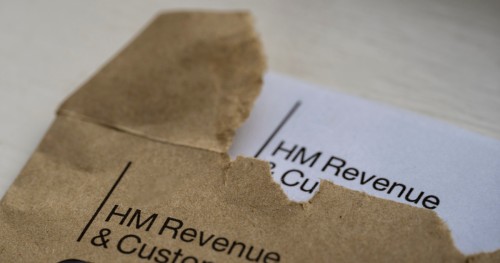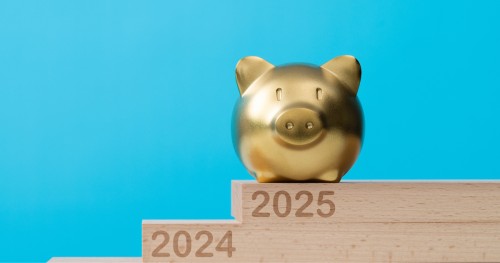How much tax would you pay on a 'side hustle'?

The term “side hustle” was first used in 1950s America. Although “hustle” suggests something illegal (originally hustle meant to swindle someone), it referred to ordinary people doing legal things to earn a few extra bucks.
Its meaning remains the same and side hustle has become a much more common term in the UK in recent years, tells GoSimpleTax. Indeed, at times it seemed everyone was supplementing their main income by selling homemade greetings cards, cuddly toys, cakes and other things face to face or via their own website, Facebook, eBay, Amazon or Etsy. Many people have successfully turned their hobby or passion into a money-spinning side hustle.
Important side hustle tax questions answered
Running a side hustle (or “side gig”) has become much easier and cheaper thanks to technology. Many people now run “dropshipping” side hustles, selling various products online to customers near and far without them having to store any stock. Side hustles can also provide the perfect opportunity to limit risk by trying out a business idea before you pack in your job and do it full time.
If you’re running your own side hustle or you’re thinking about it, tax is a key consideration. Whether innocently or otherwise, not paying tax on your side-hustle income can land you in hot water with HMRC (the UK tax authority). Although tailored tax advice from a trusted source is advised, this guide provides answers to key questions about paying tax on side hustle income.
Is your side hustle income taxable?
If you’ve simply sold off unwanted possessions online or via a local car boot sale, you won’t have to pay tax. They were personal possessions, it’s an occasional thing and you’re making relatively little profit. The same is true if, for example, you sell off your kids’ old toys on Facebook or your own pre-loved clothes via Vinted.
However, if you’re buying raw materials to make things to sell regularly or you’re buying stock to sell to customers, you’re trading and earning money from self-employment. This can be subject to Income Tax if your gross income (ie the total amount you make in sales) is more than £1,000. The “trading allowance” allows you to earn up to £1,000 of trading income tax-free.
If you’re trading, whether you’re making money from your hobby, selling things face to face or online – or selling services, such as babysitting, dog-walking, cleaning gutters, providing guitar lessons or you’re a paid tour guide at weekends – once your gross annual income is more than £1,000 it can be subject to Income Tax, dependent on how much other taxable income you earn. Some people rent out their driveways for parking near to football stadia, which can also be taxable if it’s more than £1,000 a year.
Need to know! Government website GOV.uk features an online tool that enables you to enter details to find out whether you need to tell HMRC about additional income.
What about freelancing or a second part-time job?
If you freelance to supplement your main wage and earn more than £1,000 in gross income a year, you must report it to HMRC and pay tax on it, if your total taxable income goes over thePersonal Allowance (£12,570 for the 2023/24 tax year).
As regards second jobs, for example, if you work in a pub at weekends, as a part-time employee, you’ll likely be paid through the staff payroll and taxed accordingly, after supplying your tax code. You personally won’t need to submit a tax return to HMRC. However, you’ll need to report any tips you receive, because they can also be taxable income.
Do I need to register my side hustle?
If your gross trading income is more than £1,000 a year and you’ve never registered before, you must register for Self Assessment (unless you register and run your side hustle as a limited company, which is less popular and brings different rules and responsibilities).
After registering for Self Assessment, you’ll be sent your Unique Taxpayer Reference (UTR). And to submit your Self Assessment tax return online, you’ll need to set up a Government Gateway account (the letter from HMRC stating your UTR will tell you how). Once you’ve set up the account, you’ll get an activation code in the post.
When you register for Self Assessment, you’re letting HMRC know that you’re earning additional taxable income. If you haven’t registered for Self Assessment previously, you must do so before 5 October in your business’s second tax year, otherwise HMRC could fine you. The UK tax year runs from 6 April until the following 5 April.
Need to know! If you’ve submitted Self Assessment tax returns previously, you’ll need your old UTR to register and set up your new account.
How much tax is payable on my side hustle?
You pay tax based on your net profits, which is lower than your gross income (ie total sales revenue). Tax expenses that you claim are deducted from your side hustle income and once any tax allowances have been accounted for and your other taxable income factored in (which can include wages from employment), HMRC will work out your tax bill. You must provide all of these figures to HMRC via your tax return (which is why it’s called “Self Assessment”).
You’re taxed according to the Income Tax band into which you fall once your total taxable income has been worked out. The Income Tax band tax rates for the 2023/24 tax year are as follows:
Band
Taxable income
Tax rate
Personal Allowance
Up to £12,570
0%
Basic rate
£12,571 to £50,270
20%
Higher rate
£50,271 to £125,140
40%
Additional rate
More than £125,140
45%
The Personal Allowance decreases by £1 for every £2 of net income over £100,000 and if your net income is £125,140 or more, you don’t get the Personal Allowance. Income Tax bands and rates are different in Scotland.
Need to know! Side hustlers earning more than £12,570 a year must also pay Class 2 National Insurance contributions (NICs) of £3.45 a week (if over £6,725 and below £12,570 you don’t need to pay, but you’ll still receive the benefits that come from paying Class 2 NICs. Class 4 NICs of 9% are payable on profits between £12,570 and £50,270, with 2% payable on profits over £50,270 (*2023/24 tax year for all figures).
Can I claim any side hustle tax expenses?
To help lower your tax bill, potentially, you can claim for a wide range of tax expenses, which are legitimate costs that you pay to start and run your side hustle. You summarise these within your annual Self Assessment tax return. Depending on what side hustle you’re running and providing they are for legitimate business use, allowable expenses can include:
raw materials or stock
printing and packaging
phone use and broadband
fuel, parking, train or bus fares
premises costs (eg rent, heating, lighting, business rates, etc)
office stationery and postage
advertising and marketing costs
insurance and bank charges
accounting and solicitor fees
training and professional membership fees
wages paid to others who work for you.
If you use something for your side hustle and personal reasons (eg a mobile phone), you can only claim allowable expenses for the business-cost proportion. You must use a reliable method to work out such costs and HMRC can ask you for proof of any allowable expense that you claim.
If you run a home-based side hustle, you may be able to claim for a proportion of your heating, electricity and water costs, Council Tax, mortgage interest or rent, broadband and telephone use.
If you use traditional accounting (ie you record income and expenses by the date you invoiced or were billed), you claim capital allowances when you buy equipment, machinery or a car, van or lorry for your side hustle.
If you use cash basis accounting (ie you only record income and costs in your accounts when you are paid or pay money out) and buy a car for your business, you can claim this as a capital allowance, but everything else must be claimed as an allowable expense.
Rather than working out your business expenses, you can claim flat-rate simplified expenses for vehicle use and working from home. You can’t claim any tax expenses or capital allowances if you claim the £1,000 tax-free Trading Allowance.
Need to know! Many expenses are not allowable for tax purposes, including entertaining customers, travel costs to and from your normal place of work, parking and speeding fines, a business suit, daily meal deal, etc.
What side hustle tax records must I keep?
Because you’re running a business, you must keep accurate, up-to-date records of your sales and expenses, detailing amounts and dates. If you grant credit, you should retain copies of all invoices you send out, as well as receipts and invoices for things you claim as tax expenses. Keep a detailed mileage log if you plan to claim for fuel costs.
Need to know! If your records are not accurate, complete and legible, HMRC can charge you a penalty, which can also apply if your Self Assessment tax return isn’t accurate. You must keep your records for at least five years after the 31 January online tax return deadline for each tax year.
Do I need to register for VAT?
You must register for VAT if your total VAT-taxable turnover (ie sales or income that is subject to VAT) for the past 12 months was more than £85,000 (the VAT threshold for 2023/24) or you expect your VAT-taxable turnover to go over £85,000 in the next 30 days.
You can choose to register voluntarily for VAT if your turnover is less than £85,000, which can be worthwhile if you’re paying a lot of VAT on the things you buy for your business.
If you’re registered for VAT you must add the right amount of VAT to the price of all goods or services you sell; keep records of how much VAT you pay for things you buy; account for VAT for goods you import; digitally report the amount of VAT you charged and paid each quarter; pay any VAT you owe to HMRC.
You cannot charge VAT unless you are VAT registered.
How do I report my taxable side hustle income?
You must complete and file a Self Assessment tax return (the SA100) each year, summarising your other taxable income, expenses, allowances, pension payments and benefits (if applicable). You must also complete and file the supplementary tax return page SA103, summarising your side-hustle income, tax expenses and any allowances.
After you’ve registered, you can file your tax return any time after the tax year finishes on 5 April, although the annual deadline for filing your Self Assessment tax return online, which is what most people do, is midnight on 31 January. If you miss the filing deadline, a £100 fine is payable immediately. Once HMRC receives your tax return, they’ll work out your tax bill and let you know how much you owe.
The deadlines for paying your tax bill are:
31 January for any tax you owe for the previous tax year (this is called a “balancing payment”) and your first “payment on account” (an advance payment towards your tax bill) and
31 July for your second payment on account.
Should you prefer, by arrangement with HMRC, you can make weekly or monthly payments towards your bill.
Need to know! If you don’t pay income tax on your taxable side hustle income and HMRC finds out, you could be faced with a hefty fine. Late tax payments can also result in fines and interest, so the longer you delay paying your tax bill, the more you’ll owe HMRC.



Comment
Log in or create your account to react to the article.